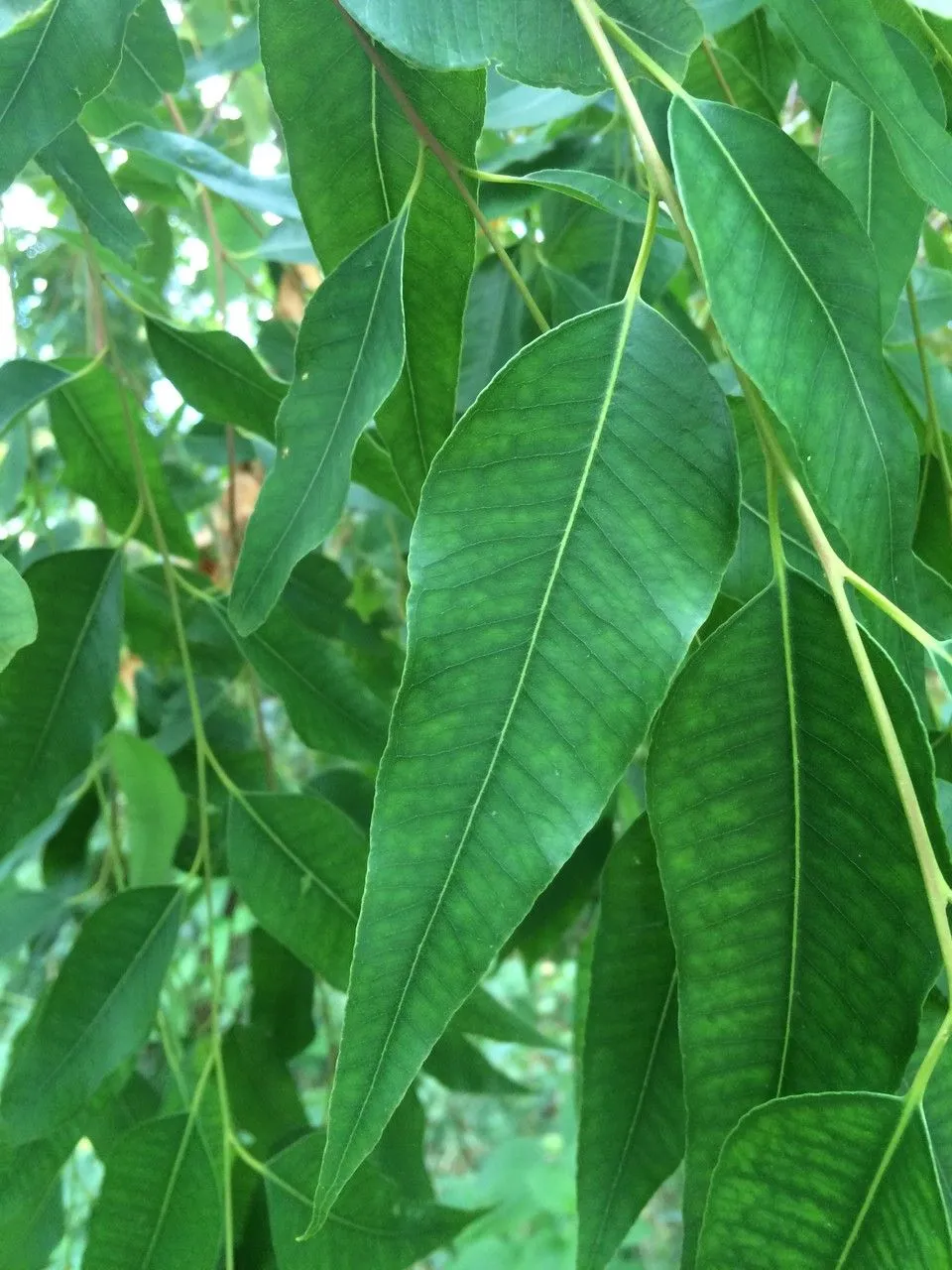
Author: F.Muell.
Bibliography: J. Proc. Linn. Soc., Bot. 3: 87 (1858)
Year: 1858
Status: accepted
Rank: species
Genus: Eucalyptus
Vegetable: False
Observations: Australia
Eucalyptus microtheca, commonly identified as the Bastard-box, is a resilient and fascinating tree species belonging to the Myrtaceae family. This species was first formally described in 1858 by the esteemed botanist Ferdinand von Mueller, and his findings were documented in the “Journal of the Proceedings of the Linnean Society, Botany” (Vol. 3, page 87).
Native to Australia, the Bastard-box thrives predominantly in the arid and semi-arid regions of the continent. It is well-adapted to survive in tough, challenging environments, which is a testament to its robust nature. One of the key ecological roles of Eucalyptus microtheca involves providing essential habitat and sustenance for a range of Australian wildlife, particularly in areas where other flora might struggle to endure.
The Bastard-box showcases characteristic features typical of the Eucalyptus genus. It is a medium-sized tree that can reach impressive heights, depending on the availability of water and soil conditions. The leaves of Eucalyptus microtheca are distinct with their lanceolate shape, and like many eucalyptus species, they exhibit a bluish-green hue.
An intriguing aspect of this species is its bark, which is rough, fibrous, and often grey-brown, peeling off in strips to reveal a smoother, paler layer beneath. This unique bark texture offers insight into its common name. The tree also produces small, white to cream-colored flowers that emerge in clusters, contributing to its subtle yet charming appearance during the blooming season.
Eucalyptus microtheca plays a crucial role in its native ecosystem. Its adaptability to harsh climates and poor soil conditions makes it invaluable for soil stabilization and the prevention of erosion in outback regions. Additionally, it is a vital source of nectar for pollinators such as bees, which are essential for maintaining the biodiversity of the area.
From an economic perspective, the wood of Eucalyptus microtheca is harvested for various uses, including fuel, construction materials, and sometimes even in ornamental settings due to its hardy nature and attractive appearance.
While the Bastard-box is not currently listed as a threatened species, ongoing conservation efforts are important to ensure that native populations remain healthy and stable, especially considering the potential impacts of climate change and land-use changes. Habitats where Eucalyptus microtheca is prevalent should be protected to maintain the ecological balance and support the diverse wildlife depending on this essential tree.
In conclusion, Eucalyptus microtheca, or the Bastard-box, is a remarkable species that embodies resilience and adaptability. Its ability to withstand harsh climates and poor soils highlights its importance both ecologically and economically within Australia. Through ongoing conservation efforts, this species can continue to thrive, supporting diverse ecosystems and offering resources for future generations.
Eng: bastard-box, coolabah, coolibah, flooded-box, western coolibah
Por: eucalipto
En: Bastard-box, Coolabah, Coolibah, Flooded-box, Western coolibah
Pt: Eucalipto
© copyright of the Board of Trustees of the Royal Botanic Gardens, Kew.
Taken Jan 10, 2017 by Hugo SANTACREU (cc-by-sa)
Taken Jan 10, 2017 by Hugo SANTACREU (cc-by-sa)
Taken Jan 10, 2017 by Hugo SANTACREU (cc-by-sa)
Family: Myrtaceae Author: (F.Muell.) K.D.Hill & L.A.S.Johnson Bibliography: Telopea 6: 402 (1995) Year: 1995 Status:…
Family: Rubiaceae Author: Pierre ex A.Froehner Bibliography: Notizbl. Bot. Gart. Berlin-Dahlem 1: 237 (1897) Year:…
Family: Sapindaceae Author: Koidz. Bibliography: J. Coll. Sci. Imp. Univ. Tokyo 32(1): 38 (1911) Year:…
Family: Asteraceae Author: A.Gray Bibliography: Pacif. Railr. Rep.: 107 (1857) Year: 1857 Status: accepted Rank:…
Family: Fabaceae Author: Medik. Bibliography: Vorles. Churpfälz. Phys.-Ökon. Ges. 2: 398 (1787) Year: 1787 Status:…
Family: Aspleniaceae Author: (Cav.) Alston Bibliography: Bull. Misc. Inform. Kew 1932: 309 (1932) Year: 1932…